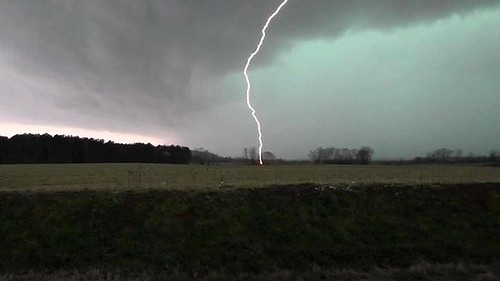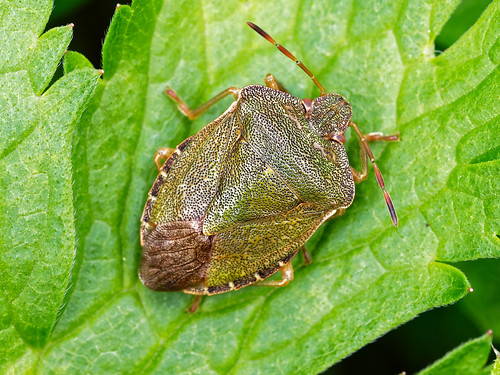Ial pleomorphy plus the ER.Confocal laser scanning microscopy of hypoctyl cells of mitoGFP revealed that even though all cells had a mixture of punctate (. lengthy) and elongated (. long) mitochondria, the relative frequency between these two broad categories varied. Eightysix % of MedChemExpress ROR gama modulator 1 mitochondria have been elongated when plants had been grown within the dark devoid of sucrose (Figures A,B), which decreased to for plants grown inResultsEarlier reports on transgenic tobacco and Arabidopsis plants, protoplasts, single cells, and detached organs (Logan and Leaver, ; Van Gestel and Verbelen, ; Logan, a) that in between them describe the full range of GPRP (acetate) mitochondrial pleomorphy in plants formed the basis for our optimization of procedures for days old seedlings of steady transgenic Arabidopsis thaliana (Columbia ecotype) expressing mitoGFP. Subsequent visualization of punctate, elongated, and giant mitochondria and the ER simultaneously in double transgenic plants coexpressing mitoGFP and RFPHDEL (RER; Sinclair et al) utilized our optimized methods.Cytosolic Sugar Levels and Exposure to Light Affect Mitochondrial Size in Plant CellsPhotosynthesis in green plant cells causes cytosolic sugar levels to fluctuate significantly in between cells and throughout the day and evening cycle (Azc Bieto and Osmond, ; Azc Bieto et al). This was the rationale behind our making use of a far more controlled, in vitro, exogenous sugarfeeding strategy. Arabidopsis mitoGFP seeds had been sown on MS medium with and devoid of sucrose and kept  in the dark to first assess if exogenous sugar within the MS medium in fact altered cytosolic sugar levels in seedlings. Cytosolic sugar estimations (Figure ; Supplementary Facts) for day old plants utilizing a phenolsulfuric acid colorimetric process
in the dark to first assess if exogenous sugar within the MS medium in fact altered cytosolic sugar levels in seedlings. Cytosolic sugar estimations (Figure ; Supplementary Facts) for day old plants utilizing a phenolsulfuric acid colorimetric process  (Buysse and Merckx,) established that plants grown on MS medium with sucrose had greater soluble sugar levels mg of fresh weight (f.w.) as in comparison with plants grown without having sucrose within the medium (mg f.w.).FIGURE Effects of light, dark and sugar on mitochondria length. (A) Pie diagram displaying the relative percentage of small (significantly less than .) vs. elongated (longer than .) mitochondria inside a cellular population for under distinct conditions. Data based on Arabidopsis mitoGFP transgenics grown for days in light (ol m s) and dark on MS medium with no sucrose (A,A,B,C) and with sucrose (A,A,D,E). Mitochondria in seedlings grown inside the dark were predominantly elongated (B,D) as in comparison with the punctate mitochondria in plants grown in light (C,E). (F,G) Dark grown plants grown with out sucrose have been transferred to light (ol m s) for h (F) and h (G) with out sucrose. Putative fission websites on tubular mitochondria are indicated (arrows).Frontiers in Plant Science SeptemberJaipargas et al.MitochondriaER interactionsthe dark with sucrose (Figures A,D). The observations on dark grown plants had to be PubMed ID:https://www.ncbi.nlm.nih.gov/pubmed/18257264 taken rapidly due to the fact rapid fission of elongated mitochondria occurred inside minutes and changed the relative quantity of tiny vs. elongated mitochondria in a cell. Whereas, of mitochondria had been elongated in plants grown in light without having sucrose (Figures A,C), only were elongated in plants grown within the light with sucrose. In addition, the light and sucrose grown plants conversely had the highest proportion of tiny, round mitochondria (Figures A,E). The effect of light on mitochondrial fission was confirmed in a separate experiment by taking plants grown inside the dark without having sugar with clearly elongated mitochondria and transferring them to ol m s.Ial pleomorphy plus the ER.Confocal laser scanning microscopy of hypoctyl cells of mitoGFP revealed that though all cells had a mixture of punctate (. lengthy) and elongated (. lengthy) mitochondria, the relative frequency amongst these two broad categories varied. Eightysix % of mitochondria had been elongated when plants were grown within the dark without sucrose (Figures A,B), which decreased to for plants grown inResultsEarlier reports on transgenic tobacco and Arabidopsis plants, protoplasts, single cells, and detached organs (Logan and Leaver, ; Van Gestel and Verbelen, ; Logan, a) that in between them describe the total selection of mitochondrial pleomorphy in plants formed the basis for our optimization of procedures for days old seedlings of steady transgenic Arabidopsis thaliana (Columbia ecotype) expressing mitoGFP. Subsequent visualization of punctate, elongated, and giant mitochondria along with the ER simultaneously in double transgenic plants coexpressing mitoGFP and RFPHDEL (RER; Sinclair et al) utilised our optimized methods.Cytosolic Sugar Levels and Exposure to Light Impact Mitochondrial Size in Plant CellsPhotosynthesis in green plant cells causes cytosolic sugar levels to fluctuate considerably involving cells and in the course of the day and evening cycle (Azc Bieto and Osmond, ; Azc Bieto et al). This was the rationale behind our applying a a lot more controlled, in vitro, exogenous sugarfeeding method. Arabidopsis mitoGFP seeds have been sown on MS medium with and without sucrose and kept within the dark to 1st assess if exogenous sugar within the MS medium really altered cytosolic sugar levels in seedlings. Cytosolic sugar estimations (Figure ; Supplementary Facts) for day old plants using a phenolsulfuric acid colorimetric method (Buysse and Merckx,) established that plants grown on MS medium with sucrose had larger soluble sugar levels mg of fresh weight (f.w.) as in comparison to plants grown with no sucrose within the medium (mg f.w.).FIGURE Effects of light, dark and sugar on mitochondria length. (A) Pie diagram showing the relative percentage of compact (much less than .) vs. elongated (longer than .) mitochondria within a cellular population for below distinctive situations. Data depending on Arabidopsis mitoGFP transgenics grown for days in light (ol m s) and dark on MS medium with no sucrose (A,A,B,C) and with sucrose (A,A,D,E). Mitochondria in seedlings grown in the dark were predominantly elongated (B,D) as when compared with the punctate mitochondria in plants grown in light (C,E). (F,G) Dark grown plants grown with out sucrose had been transferred to light (ol m s) for h (F) and h (G) devoid of sucrose. Putative fission websites on tubular mitochondria are indicated (arrows).Frontiers in Plant Science SeptemberJaipargas et al.MitochondriaER interactionsthe dark with sucrose (Figures A,D). The observations on dark grown plants had to become PubMed ID:https://www.ncbi.nlm.nih.gov/pubmed/18257264 taken quickly considering that fast fission of elongated mitochondria occurred within minutes and changed the relative number of smaller vs. elongated mitochondria in a cell. Whereas, of mitochondria were elongated in plants grown in light without having sucrose (Figures A,C), only were elongated in plants grown inside the light with sucrose. Additionally, the light and sucrose grown plants conversely had the highest proportion of compact, round mitochondria (Figures A,E). The impact of light on mitochondrial fission was confirmed in a separate experiment by taking plants grown within the dark with no sugar with clearly elongated mitochondria and transferring them to ol m s.
(Buysse and Merckx,) established that plants grown on MS medium with sucrose had greater soluble sugar levels mg of fresh weight (f.w.) as in comparison with plants grown without having sucrose within the medium (mg f.w.).FIGURE Effects of light, dark and sugar on mitochondria length. (A) Pie diagram displaying the relative percentage of small (significantly less than .) vs. elongated (longer than .) mitochondria inside a cellular population for under distinct conditions. Data based on Arabidopsis mitoGFP transgenics grown for days in light (ol m s) and dark on MS medium with no sucrose (A,A,B,C) and with sucrose (A,A,D,E). Mitochondria in seedlings grown inside the dark were predominantly elongated (B,D) as in comparison with the punctate mitochondria in plants grown in light (C,E). (F,G) Dark grown plants grown with out sucrose have been transferred to light (ol m s) for h (F) and h (G) with out sucrose. Putative fission websites on tubular mitochondria are indicated (arrows).Frontiers in Plant Science SeptemberJaipargas et al.MitochondriaER interactionsthe dark with sucrose (Figures A,D). The observations on dark grown plants had to be PubMed ID:https://www.ncbi.nlm.nih.gov/pubmed/18257264 taken rapidly due to the fact rapid fission of elongated mitochondria occurred inside minutes and changed the relative quantity of tiny vs. elongated mitochondria in a cell. Whereas, of mitochondria had been elongated in plants grown in light without having sucrose (Figures A,C), only were elongated in plants grown within the light with sucrose. In addition, the light and sucrose grown plants conversely had the highest proportion of tiny, round mitochondria (Figures A,E). The effect of light on mitochondrial fission was confirmed in a separate experiment by taking plants grown inside the dark without having sugar with clearly elongated mitochondria and transferring them to ol m s.Ial pleomorphy plus the ER.Confocal laser scanning microscopy of hypoctyl cells of mitoGFP revealed that though all cells had a mixture of punctate (. lengthy) and elongated (. lengthy) mitochondria, the relative frequency amongst these two broad categories varied. Eightysix % of mitochondria had been elongated when plants were grown within the dark without sucrose (Figures A,B), which decreased to for plants grown inResultsEarlier reports on transgenic tobacco and Arabidopsis plants, protoplasts, single cells, and detached organs (Logan and Leaver, ; Van Gestel and Verbelen, ; Logan, a) that in between them describe the total selection of mitochondrial pleomorphy in plants formed the basis for our optimization of procedures for days old seedlings of steady transgenic Arabidopsis thaliana (Columbia ecotype) expressing mitoGFP. Subsequent visualization of punctate, elongated, and giant mitochondria along with the ER simultaneously in double transgenic plants coexpressing mitoGFP and RFPHDEL (RER; Sinclair et al) utilised our optimized methods.Cytosolic Sugar Levels and Exposure to Light Impact Mitochondrial Size in Plant CellsPhotosynthesis in green plant cells causes cytosolic sugar levels to fluctuate considerably involving cells and in the course of the day and evening cycle (Azc Bieto and Osmond, ; Azc Bieto et al). This was the rationale behind our applying a a lot more controlled, in vitro, exogenous sugarfeeding method. Arabidopsis mitoGFP seeds have been sown on MS medium with and without sucrose and kept within the dark to 1st assess if exogenous sugar within the MS medium really altered cytosolic sugar levels in seedlings. Cytosolic sugar estimations (Figure ; Supplementary Facts) for day old plants using a phenolsulfuric acid colorimetric method (Buysse and Merckx,) established that plants grown on MS medium with sucrose had larger soluble sugar levels mg of fresh weight (f.w.) as in comparison to plants grown with no sucrose within the medium (mg f.w.).FIGURE Effects of light, dark and sugar on mitochondria length. (A) Pie diagram showing the relative percentage of compact (much less than .) vs. elongated (longer than .) mitochondria within a cellular population for below distinctive situations. Data depending on Arabidopsis mitoGFP transgenics grown for days in light (ol m s) and dark on MS medium with no sucrose (A,A,B,C) and with sucrose (A,A,D,E). Mitochondria in seedlings grown in the dark were predominantly elongated (B,D) as when compared with the punctate mitochondria in plants grown in light (C,E). (F,G) Dark grown plants grown with out sucrose had been transferred to light (ol m s) for h (F) and h (G) devoid of sucrose. Putative fission websites on tubular mitochondria are indicated (arrows).Frontiers in Plant Science SeptemberJaipargas et al.MitochondriaER interactionsthe dark with sucrose (Figures A,D). The observations on dark grown plants had to become PubMed ID:https://www.ncbi.nlm.nih.gov/pubmed/18257264 taken quickly considering that fast fission of elongated mitochondria occurred within minutes and changed the relative number of smaller vs. elongated mitochondria in a cell. Whereas, of mitochondria were elongated in plants grown in light without having sucrose (Figures A,C), only were elongated in plants grown inside the light with sucrose. Additionally, the light and sucrose grown plants conversely had the highest proportion of compact, round mitochondria (Figures A,E). The impact of light on mitochondrial fission was confirmed in a separate experiment by taking plants grown within the dark with no sugar with clearly elongated mitochondria and transferring them to ol m s.